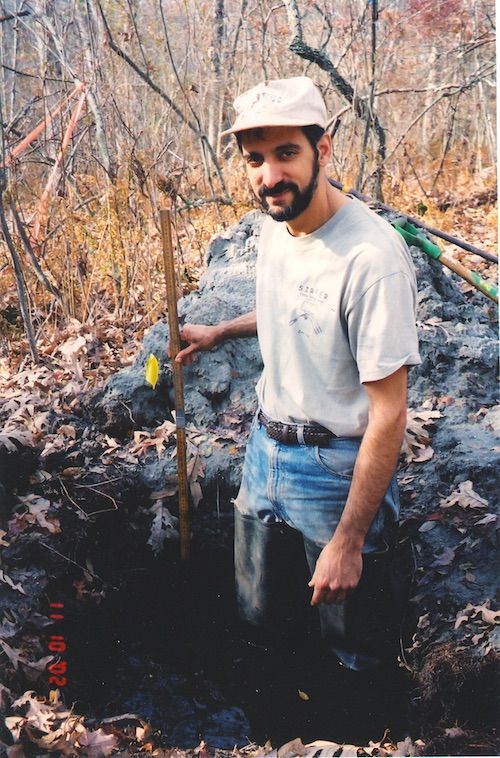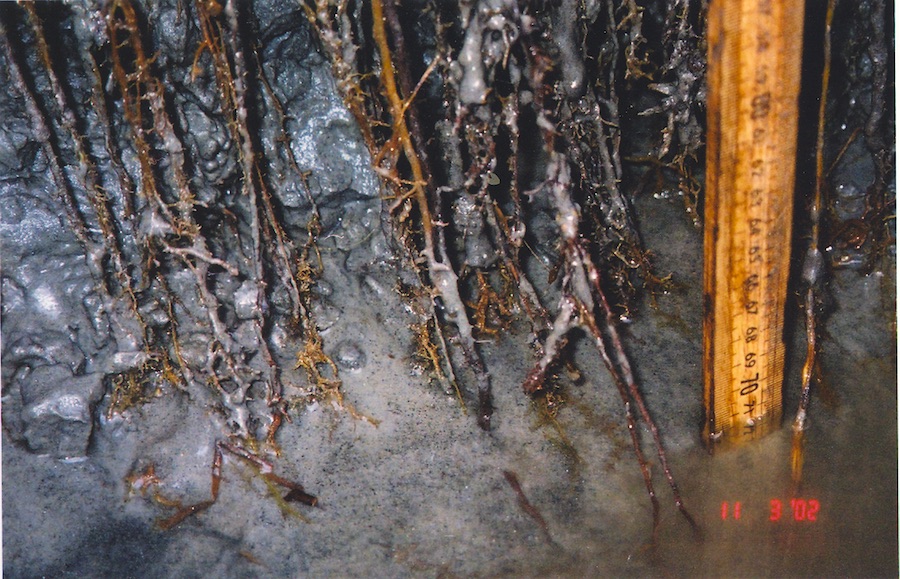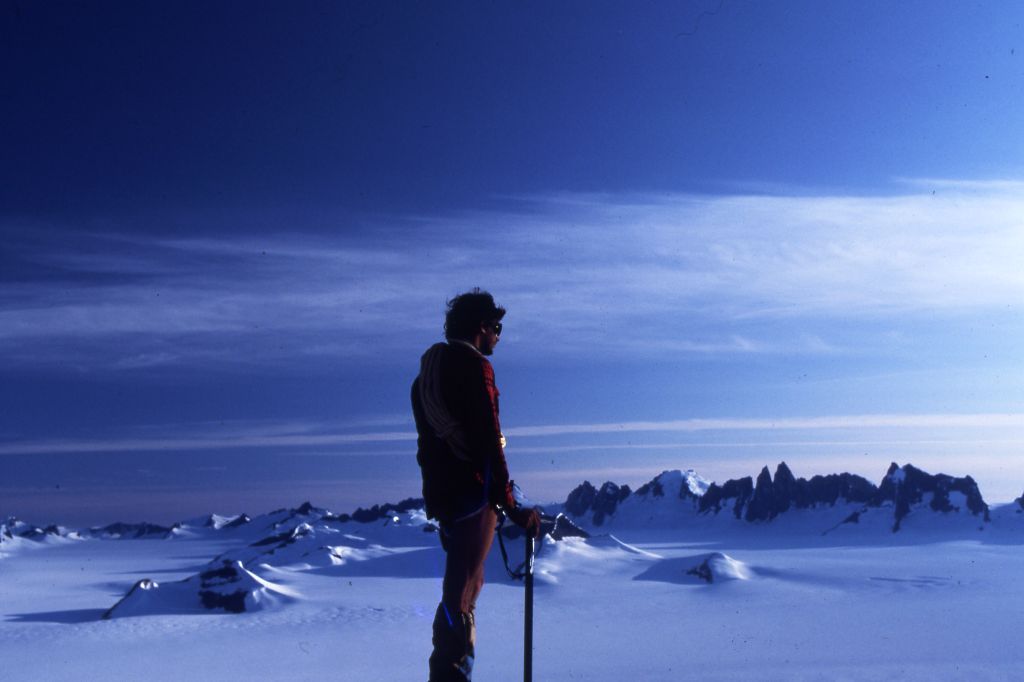
“I am somebody who enjoys spending time tramping around in the woods,” says Ecosystem Biologist Noel Gurwick, an earth system scientist. Perhaps that’s part of the reason he’s interested in protecting the environment from damage done by human activity.
In the late 18th (1700s) and early 19th (1800s) centuries, the industrial revolution brought great changes to the economy. People used metal and new sources of energy, such as coal, steam, and petroleum to build machines and power cars and trains. They organized themselves and those machines into factories that allowed them to produce clothing and goods that would improve communication and transportation more quickly and cheaply than was possible in small workshops.
Along with the benefits of the industrial revolution came costs which continue today. Powering factories and some of the tools they produce by burning fossil fuels like coal, oil, and natural gas releases carbon dioxide (CO2), methane (CH4), and nitrous dioxide (NO2) into the atmosphere. This causes the atmosphere to trap more heat, changing living conditions for plants and animals here on Earth.

Agricultural (farming-related) activities also release these gases into the environment. Nitrogen-based fertilizer added to fields, for instance, releases more nitrogen than the fields’ plants can use. Some of this nitrogen is released as N2 — a gas that does not cause problems. But some of it can get trapped in soil and released into groundwater as nitrates (nitrogen atoms bonded to three oxygen atoms). Microbes convert these nitrates into nitrous oxide (N2O), “a major ozone-depleting substance in the atmosphere.” Excess nitrogen can also cause algae to grow very rapidly and choke out other life in coastal waters.
How much nitrogen fertilizer from corn fields and other agricultural areas ends up in the atmosphere as nitrous oxide? How much ends up in streams and other waterways? How is it transformed chemically along the way? What effects does it have on plants, animals, and other life in near-shore waters? On people who drink water from wells? These are the kinds of questions that interest Gurwick.
“I’ve been trying to figure out how agricultural managements might contribute to reducing this problem.” For instance, Midwestern farmers might reduce harmful gas emissions and other pollutants by growing cover crops (plants that improve soil fertility and prevent erosion between the seasons when farmers grow the crops they sell). “Cover crops reduce the amount of fertilizer and nitrogen that leaves the farm field” by as much as 25-70 percent. “To reduce nitrate leaching, cereal cover crops do better than legumes,” so farmers might use Gurwick’s and his colleagues’ findings to balance their desire not to pollute the environment with their desire to enrich their soil (which legumes might do best). “It depends what your objectives are, what your budget is, and what different cover crop seeds cost.”
Recently, Gurwick and other scientists looked at research on the effects of “biochar” — charcoal —added to forest and agricultural soils. Some people believe that adding biochar might be an effective way to rein in climate change. “The idea behind this is that charcoal is stable: it doesn’t decompose quickly.”
Sounds like a potentially revolutionary solution: take carbon that would otherwise have been released into the atmosphere, heating up our planet, and turn it into charcoal that you bury. Take dead trees, coconut shells, “mango seeds — whatever your organic waste is — and make charcoal out of it,” in order to essentially “suck carbon out of the atmosphere.”
But would this really be the case? How long would the carbon in the biochar stay put, stuck in the charcoal? Gurwick and his colleagues did a literature review, collecting studies of the behavior of charcoal to begin to answer these questions. “We were not convinced that charcoal actually sticks around for a long time.”
They compared laboratory studies with field studies, noting that lab-based studies are faster and less expensive but also that “a bit of soil in a flask in the lab doesn’t behave the way it would in the field.” Temperatures, the presence of the plants that would normally found in the field, and other factors limit how realistic lab results might be. “We wanted to assess the basis for others’ claims about how long biochar sticks around. We wanted to see how many lab studies have been done and how many field studies have been done. And then we wanted to see what conclusions emerged specifically from the field studies.”

So how long does charcoal remain stable, keeping carbon out of the atmosphere? “If we’d found six studies that said 5000 years and one that said 50 years, that would have been one thing.” But the results they found suggested a great range of lifetimes of charcoal: from “nine years to several thousand years and everything in between.” “Was there evidence to support these claims that charcoal was a good part of the solution to climate change? We couldn’t say for certain that that’s not true but we felt pretty confident that the evidence available couldn’t support the claim that it is true.”
Gurwick and his colleagues wanted to warn well-intentioned land managers and policy-makers against investing a great deal of time, money, and effort into making biochar and putting it onto the land. They cautioned against assuming the carbon would stay there for thousands of years before there was strong evidence that this was true. With this in mind, they published their findings in a paper they made accessible to the public.
As a sixth grader in New York City, Noel “did a lot of hands-on work” in science class, experimenting “with laboratory rats, anesthetizing them, and cutting out their hearts.” “You have to find some sort of balance between recognizing that your students are children and treating them as adults — treating them with a lot of respect for their minds and their abilities.” Noel’s science teacher “was able to do that. I ended up spending a lot of time after school in his classroom.”

Perhaps his positive experience in middle school science (as well as his love of the outdoors) inspired Noel to spend a summer on an ice field, studying glaciology. This National Science Foundation-sponsored Juneau Icefield Research Program program gave him a chance to expand his experience with hands-on science. The research teams asked different questions, including how fast and why different glaciers advance and retreat. “That field of study is getting more attention in the popular media now because glaciers worldwide are retreating as a result of climate change.”
After majoring in biology at Brown University, Gurwick went on to do a PhD in biogeochemistry and environmental change. His dissertation involved asking questions about how microscopic organisms living deep in the soil affect the quality of water as it moves from uplands (higher areas) into streams. As he pursued answers to these questions, Gurwick dug up roots near streams, did experiments with water from wells, and measured the gases that microbes produce from different soils.
Just as the nitrogen in fertilizers added to agricultural fields can end up in streams and carbon can move from dead plants into the atmosphere, Gurwick’s studies have taken him from streams to fields to laboratories and beyond.


